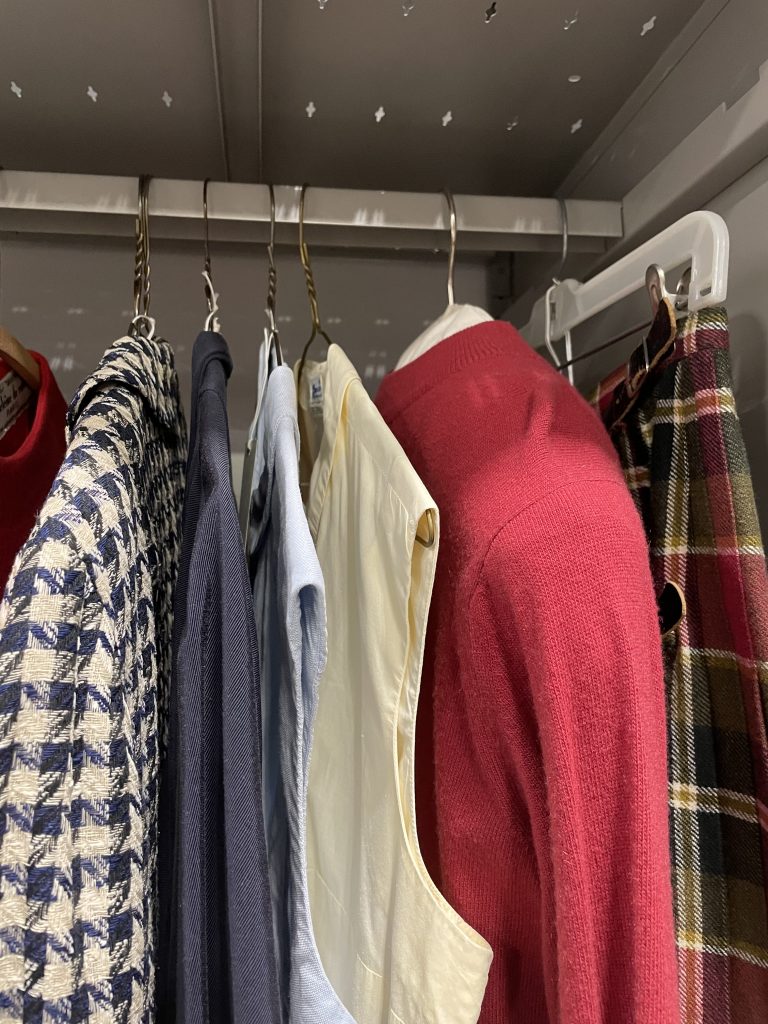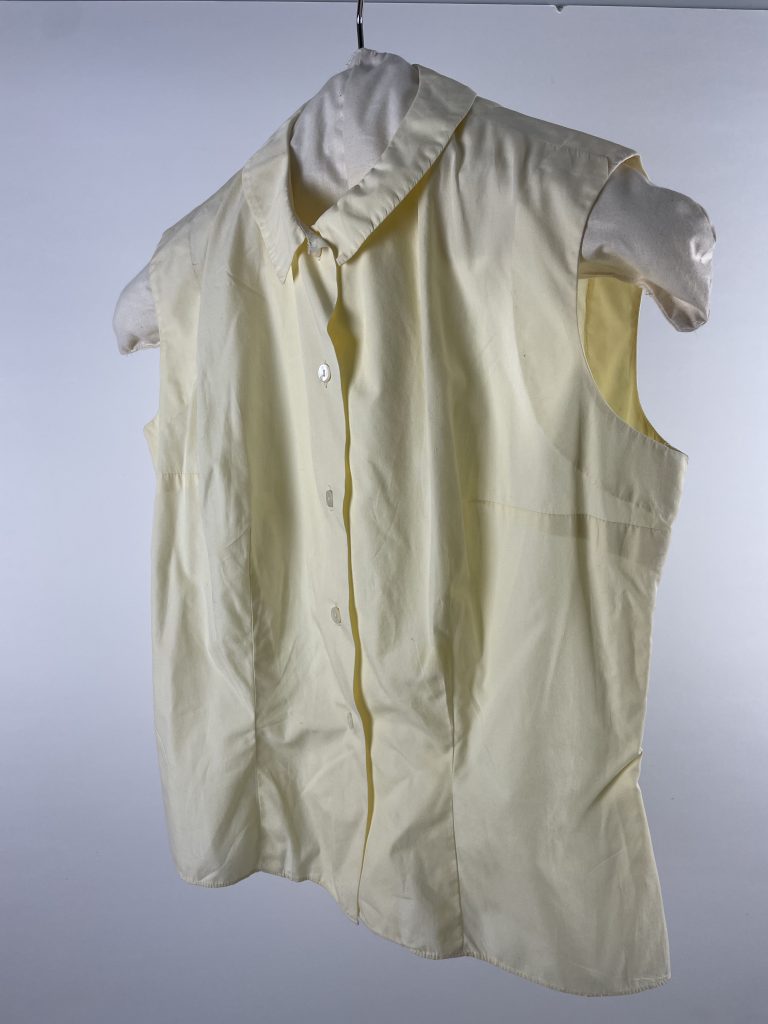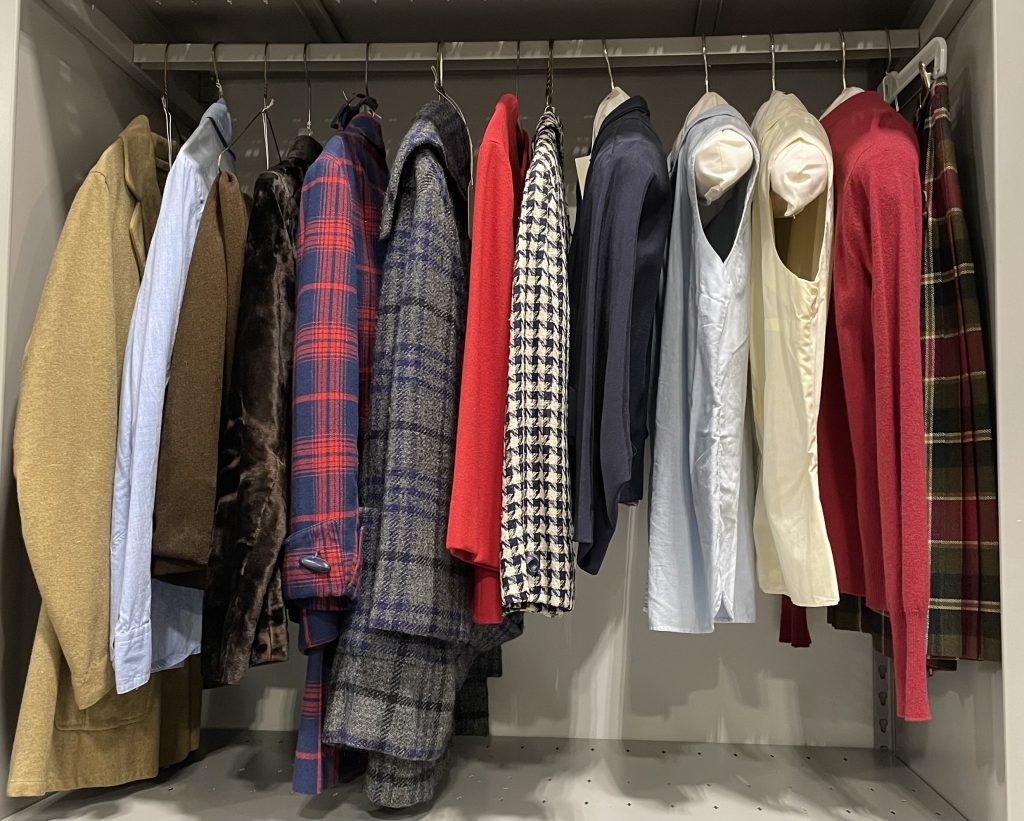Making historic garment hangers: A Girl Scout Silver Award project
By Jennifer Bowman, volunteer services coordinator
The Delaware Division of Historical and Cultural Affairs recently welcomed Cadette Girl Scout, Samantha Bello, and co-leader Mary M. Tait, from Troop 513 in Newark, Delaware, to the Delaware Center for Material Culture in Dover to complete Bello’s Girl Scout Silver Award journey. The Girl Scout Silver Award is the highest award a Cadette Girl Scout can earn. The journey through Cadette scouts provides the opportunity for girls to learn how to lead, be organized, thoughtful and endeavor to make a positive difference in their community.
The key component of earning the award is a community-focused activity called a “Take Action” project. Scouts work with a team to explore constructive activities that will support needs of the community through volunteer work that is both fun and challenging. The Silver Award program encourages scouts to explore topics and issues that interest them, and research how they connect to both their personal values and broader community needs.

The Center for Material Culture (CMC) was built in 2019 and opened in 2020 to house the State’s multi-million-item collection of archeological artifacts, art, museum objects, archival materials and historic garments. The Division’s new facility provides the community with opportunities for volunteer assistance with small projects related to historic preservation and research. Bello’s interests in sewing, fashion and history were put to good use by connecting her with Megan Hutchins, CMC’s engagement and collections manager, to learn about and create special, padded garment hangers. The historic garments collection includes a wide variety of clothes such as historic military uniforms, coats, blouses, trousers, bathing costumes and evening gowns.
The care of antique clothes requires several methods of careful preservation and storage. Clothing items are either placed in special archival acid-free boxes or hung on archival, padded hangers that carefully distribute the weight of heavy cloth, such as that used for wool uniforms and coats. These padded hangers help to slow the natural process of disintegration of cloth fibers. Once Bello and her troop leader learned that the hanging garment collection needed better hangers, they got to work with Division staff and volunteers to organize, assemble and sew the special padded hangers that the collections team would be able to put to immediate use in the careful storage, preservation, management and display of historic garments in the collection. Materials for constructing the hangers were provided by the Division.
Bello learned new sewing skills for this project, from breaking her tasks into manageable steps, drafting a basic pattern, laying out and cutting fabric with minimal waste to how to use different kinds of sewing machines and hand-stitching techniques. Over the course of several weekends, Bello and Tait met with volunteers at St. Thomas’s Episcopal Church in Newark and at the Center for Material Culture in Dover to assemble and sew a total of 50 garment hangers. About 80 hours of work concluded with Samantha being able to present a full box of newly padded hangers to Hutchins. She was even able to help place several historic garments on the new hangers for the garment collection!
The Division is proud to have been able to provide this opportunity to collaboratively work with a local Girl Scout troop on a project that has been a rewarding learning experience for all involved. It was a privilege to welcome members of Girl Scout Troop 513 as the first volunteer group at the new Center for Material Culture in Dover, and we sincerely appreciate the dedication and hard work of everyone on this volunteer team. We hope this will be the first of many community engagement opportunities that the Division shares with local groups and organizations.





